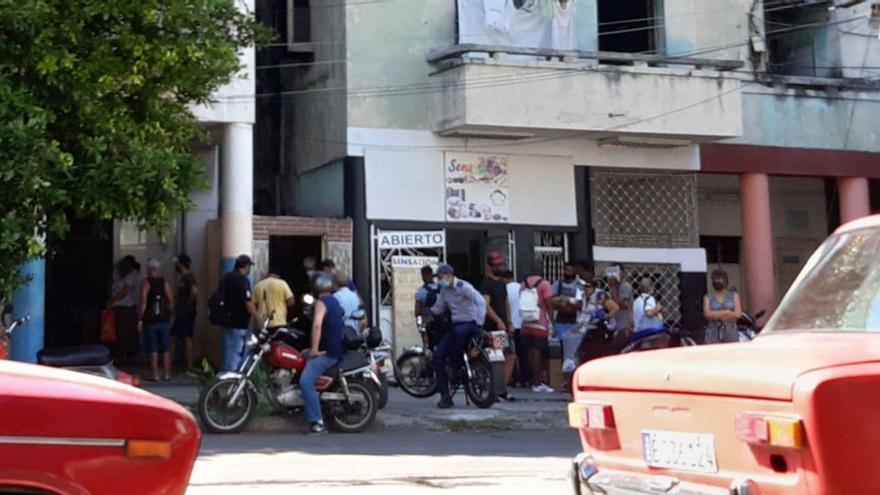
![]() 14ymedio, Natalia López Moya, Havana, October 12, 2021 — The Rapid Response Brigades (BRR), the regime’s shock troops, were mobilized on Tuesday after the Cuban government refused to to allow a public march on this coming November 15. In neighborhoods where the July 11 demonstrations were most intense, state-employed workers, police and State Security agents were sent in to patrol the streets.
14ymedio, Natalia López Moya, Havana, October 12, 2021 — The Rapid Response Brigades (BRR), the regime’s shock troops, were mobilized on Tuesday after the Cuban government refused to to allow a public march on this coming November 15. In neighborhoods where the July 11 demonstrations were most intense, state-employed workers, police and State Security agents were sent in to patrol the streets.
The presence of the BRR at Aranguren and Ayestaran streets, one of the busiest intersections in in Havana’s Cerro district and one of the closest to Plaza of the Revolution, has created a “tense atmosphere” according to Yulieska, an area resident. Even activity at the neighborhood’s underground market has been curtailed as people wait for the heavy security presence to diminish.
On July 11 a huge cordon of police, State Security agents, soldiers and young military draftees prevented demonstrators from reaching the Plaza of the Revolution. Hundreds of Cubans marched through the streets from Old Havana to Cerro before being stopped by security forces. Hundreds of people were arrested during the incident and some were injured.
“It’s a very protected area because they want to stop people from getting to the Plaza in the event of a protest,” explains Yulieska.
The Plaza of the Revolution complex houses the Palace of the Revolution and presidential offices, the Cuban government and the Cuban Communist Party Central Committee. Adjacent areas are home to important ministries such as the Armed Forces, Interior, Communications, and Economy and Planning.
The Plaza, a enormous open space flanked by a tall tower and presided over by a statue of Jose Marti, has served as the stage for large rallies and official events for decades. For this reason, the government is trying desperately to prevent hundreds or thousands of people from gathering in an area that it sees as a symbol of the massive popular support that the regime enjoyed in its early days.
In other districts such as Central Havana, the pinch point of the July 11 protests, and in other neighborhoods such as Vedado, residents confirm the visible presence of State Security agents and plainclothes policemen. At Martyr’s Park, Infanta and San Lazaro streets, and the area around the Yara movie theater, many security personnel can be seen.
During the July 11 protests, officials mobilized the BRR along with workers and young military recruits. They were given sticks and baseball bats to confront thousands of demonstrators calling for freedom.
The brigades were conceived and created in the early 1990s to serve as a paramilitary police force that would allow the regime to control outbreaks of popular unrest. In an effort to avoid the image of men in uniform taking repressive actions against civilians, Cuban officials formed these “brown shirt” brigades as a first line of defense against public protests.
The BRR have played a prominent role in acts of public repudiation against dissidents and activist groups, most notably the Ladies in White. But they first came into their own in August 1994 when, together with police and construction workers armed with sticks, they confronted demonstrators during the popular revolt known as the Maleconazo — the Malecon uprising — which led to the so-called Balsero [Rafter] crisis.
____________
COLLABORATE WITH OUR WORK: The 14ymedio team is committed to practicing serious journalism that reflects Cuba’s reality in all its depth. Thank you for joining us on this long journey. We invite you to continue supporting us by becoming a member of 14ymedio now. Together we can continue transforming journalism in Cuba.
